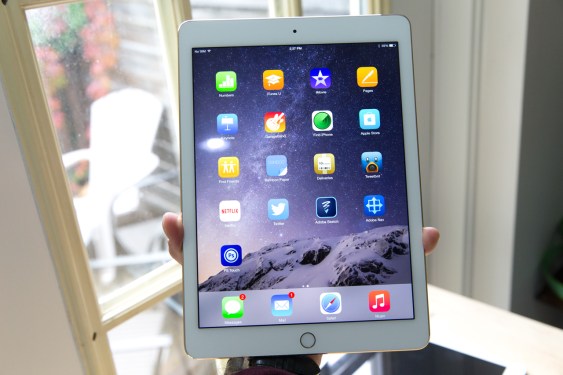The Rise of Smart Rings: A New Era for Wearables
When people think of wearables, they often immediately associate it with smartwatches. However, 2024 was a relatively quiet year for smartwatches, with iterative updates dominating the market. This is not unusual in a maturing category, where innovation and experimentation are no longer the primary drivers of growth. Instead, companies focus on refining their products to meet consumer expectations.
The Emergence of Smart Rings
Smart rings, on the other hand, have been quietly gaining traction over the past year. While they are not new, 2024 saw a resurgence in interest in this form factor. Several smart ring manufacturers showcased their products at CES, and Samsung’s announcement of the Galaxy Ring in February marked a significant turning point.
Samsung’s entry into the smart ring market is noteworthy because it represents a major player in the industry expanding into an entirely new category. The Galaxy Ring is capable of working in tandem with Samsung’s Galaxy Watches to optimize battery life and sensor accuracy. When paired with a Z Fold 6 or a Z Flip 6, it can even recognize pinching gestures to control the phone’s camera.
Innovations in Smart Rings
The newer crop of smart rings offers some exciting innovations. The Galaxy Ring, for instance, has features that go beyond traditional health tracking. Oura, which has dominated this space for the past decade, primarily focuses on sleep tracking and recovery. However, other manufacturers are now exploring new ideas, such as silent haptic alarms and in-app AI chatbots.
The Impact of Competition
Competition is good for innovation, and the smart ring market is no exception. Oura’s dominance has led to a surge in interest from other manufacturers, who are pushing the boundaries of what a smart ring can do. This renewed focus on smart rings has led to new features and integrations, such as continuous glucose monitors.
Challenges in Developing Smart Rings
While smart rings have gained popularity, there are still several challenges associated with developing these devices. They are expensive compared to similarly priced smartwatches, and their functionality is limited by their small size. Additionally, manufacturers must contend with the challenge of creating a one-size-fits-all solution for a wide range of finger sizes.
The Future of Smart Rings
While the interest in smart rings is there, it remains to be seen whether this renaissance will continue. Samsung’s Galaxy Ring has been well-received, but its success is not guaranteed. If it does well, especially as an accessory to other gadgets, we can expect other major players like Google and Apple to take notice.
Conclusion
The smart ring market is at a crossroads. With renewed interest in this form factor comes the challenge of developing products that meet consumer expectations. While there are still several hurdles to overcome, the innovations and ideas being explored in smart rings are exciting. As we move forward into 2025, it will be interesting to see whether the renaissance continues or if our attention returns to traditional wearables.
The Benefits of Smart Rings
Smart rings offer several benefits that set them apart from traditional wearables. They are discreet and comfortable, making them ideal for those who want a more subtle approach to tracking their health. Additionally, smart rings often focus on specific features, such as sleep tracking or recovery, which can be appealing to consumers looking for a more specialized experience.
The Drawbacks of Smart Rings
While smart rings have gained popularity, there are still several drawbacks associated with these devices. They are expensive compared to similarly priced smartwatches, and their functionality is limited by their small size. Additionally, manufacturers must contend with the challenge of creating a one-size-fits-all solution for a wide range of finger sizes.
The Future of Smart Rings: A Discussion
With renewed interest in smart rings comes the question of whether this renaissance will continue or if we’ll return to traditional wearables. There are several factors at play, including consumer demand and manufacturer innovation. In this discussion, we’ll explore the challenges and opportunities facing the smart ring market.
What is a Smart Ring?
A smart ring is a wearable device that can track various health metrics, such as heart rate, sleep patterns, and activity levels. They often have features similar to smartwatches but are designed to be more discreet and comfortable on the finger. Some smart rings also offer additional features, such as silent haptic alarms or in-app AI chatbots.
The Benefits of Choosing a Smart Ring
Choosing a smart ring can offer several benefits over traditional wearables. For one, they are often more discreet and comfortable, making them ideal for those who want a more subtle approach to tracking their health. Additionally, smart rings often focus on specific features, such as sleep tracking or recovery, which can be appealing to consumers looking for a more specialized experience.
The Drawbacks of Choosing a Smart Ring
While smart rings have gained popularity, there are still several drawbacks associated with these devices. They are expensive compared to similarly priced smartwatches, and their functionality is limited by their small size. Additionally, manufacturers must contend with the challenge of creating a one-size-fits-all solution for a wide range of finger sizes.
Conclusion
The smart ring market is at a crossroads. With renewed interest in this form factor comes the challenge of developing products that meet consumer expectations. While there are still several hurdles to overcome, the innovations and ideas being explored in smart rings are exciting. As we move forward into 2025, it will be interesting to see whether the renaissance continues or if our attention returns to traditional wearables.
Recommendations
For manufacturers looking to enter the smart ring market, we recommend focusing on innovation and experimentation. This means developing new features and integrations that meet consumer expectations while also pushing the boundaries of what a smart ring can do. Additionally, manufacturers should prioritize comfort and discretion, as these are key selling points for consumers.
Conclusion
The future of smart rings is uncertain, but one thing is clear: the interest in this form factor is there. As we move forward into 2025, it will be interesting to see whether the renaissance continues or if our attention returns to traditional wearables.




